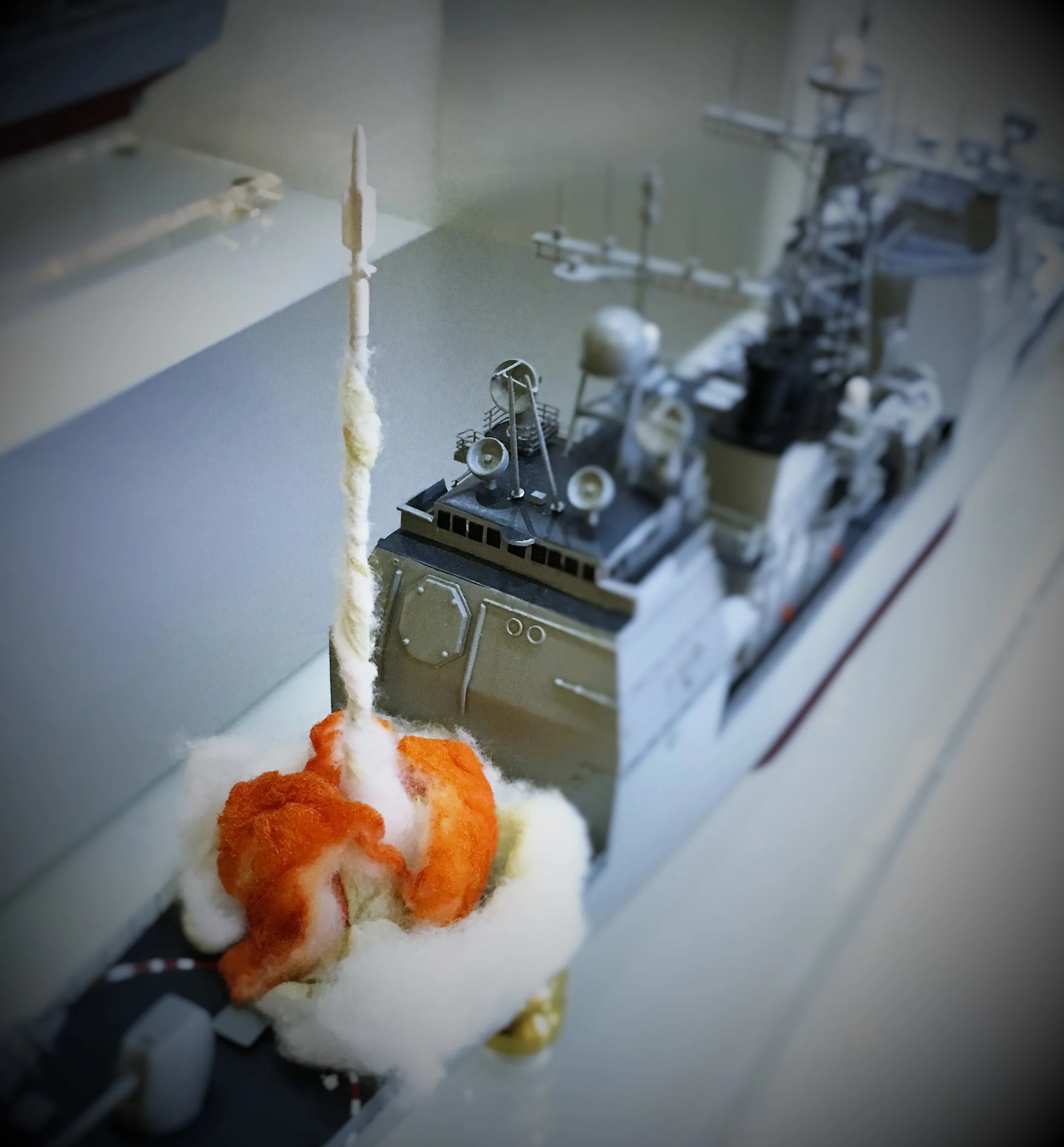Deep down you’re excited.
You’re excited that your new idea is going to sell. You’re excited that your new product will be met with fanfare, enthusiasm, and will win the hearts and minds (and wallets) of an entire market.
I know this feeling. I’ve had this feeling many times before. Not just the first time I developed a new product idea. But the second, third, fourth, twentieth time and beyond.
Despite having my early product development activities fail many times, I rarely considered that my next would share the same fate.
Blinded by excitement over each great idea, I kept trying. And so will you. As entrepreneurs and business owners, we have to keep trying. Innovate or die… or so they say.
But stop and think for a moment.
How can we innovate so blindly with so much at stake? How can we thoughtlessly build that “next great product” when so many businesses around us create products that fail? How can we justify the cost and time it takes to build a new idea into reality based solely on our excitement?
You can’t. Or at least, you shouldn’t.
What I discovered in my early years is that, without justifying your new idea, the new product you develop will be a shot in the dark. An unjustified product bases its success on pure luck.
I’m not talking about the flip-a-coin-fifty-fifty kind of luck. I’m talking about the astronomical-lottery-ticket-never-gonna-win kind of luck.
If you’re in the middle of a product development cycle and this comes as discouraging to you, it shouldn’t. For one, consider this:
Your Product Isn’t the Only Solution to Your Customer’s Problem
Your customers have a myriad of problems they deal with on a daily basis. Personal problems, productivity problems, technology problems, manager problems, teamwork problems, etc.
For each and every one of these problems, your customers have either:
- found a solution and are happy,
- are frustrated that the solution they found doesn’t work, or
- learned to deal with their problem.
You may think your new idea is so exciting that your customers will not only jump in line to buy it, but will also share it in a viral social-media frenzy. The reality is that your customers either already have a solution, won’t know about your solution, or won’t be willing to pay for your solution.
So is all lost?
Not at all. New products enter the market every day. Most fail. But many don’t. Some even go on to be massively successful, taking small companies public or generating enormous amounts of revenue.
What is the key differentiator between these highly successful products and the rest?
Product Justification
Years ago I stood in front of my peers and executives at a company strategy meeting, pitching a new product idea in an attempt to land a paltry $300,000 in internal product development funding (our company had over $1 billion in yearly revenue).
My pitch showed the wonder of this new product idea. Generated by the smartest brains in our division, this product would be sure to sell, so the story was told.
Unfortunately, my story unraveled…
My boss: “Why would we go build a new product when the last one didn’t sell?”
Executives and colleagues: [Eyes on me]
Me: “???”
Despite my silence, I could have flipped my chair in a fit of rage. I was angry and embarrassed to be confronted, to stand dumbfounded, to not have an answer.
My boss wasn’t trying to anger me. He merely delivered the truth in the form of a question. His question was a valid one, and deep down, it raised an issue that had worried me for some time.
My boss wanted product justification, and I didn’t have it. But I would the next time around…
Finding Product Questions That Matter
Tail tucked between my legs, I left our company strategy meeting motivated more than ever. I would study, review past product successes and failures, learn from experienced product managers, and develop a set of questions and guidelines that mattered.
The next time anyone asked why we should develop a product, I would have an answer based on data and reasoning instead of ignorance and excitement.
I experimented with long-form statements of work, marketing requirement documents, and multi-day meetings to get to the root of what matters. Through all of it, I can share some good news:
You don’t need to have that feeling of despair wrapped in wonder and frustration.
You don’t need to ask yourself “Why isn’t my product selling?”
You don’t need to lie to yourself and say, “Maybe if I just build that cool new idea or add that one new feature, sales will take off.”
And you don’t need to worry about spending days or weeks filling out a 14-page marketing requirements document that will collect dust as soon as it’s finished (yes, our marketing requirements document template was 14 pages long without a single section filled in).
Having now developed or led the development of nearly 20 distinct products between five companies, I can say there are only a handful of things that matter to a product’s success, and we’ve boiled it down to this:
The Product Justification Guide
Before I dive in and share with you a simple list of 8 questions that can significantly reduce your chances of building a product that fails, let’s discuss what this guide is not:
This guide is not a procrastinating device. We’re trying to bring a new product to market, not generate a document for your customers to read.
This guide is not a lengthy marketing requirements document meant to analyze every angle of every feature of your product.
This guide is not a user experience, support and testing, compatibility, schedule, or detailed requirements document. You may need those down the road, but not now.
So what is it?
This guide is a set of questions that you can answer to help you quickly ascertain whether your product has a chance for success. Those initial product ideas can be exciting, I know. But product ideas need time to mature. Not too long (time to market is crucial if your idea is a good one). But with the right set of questions, you can feel confident about the return on investment in a short amount of time.
With these thoughts and your product idea in mind, here are the 8 questions your new product should answer or risk being doomed to fail miserably:
1. How does the new product fit your company mission?
Before considering anything else, you need to consider how this product fits into your company mission. Anyone can weave baskets, but if your business’s mission is to build productivity apps, you’re just wasting your time, energy, and will likely introduce a mediocre product into the market.
Worst of all, if your product doesn’t fit your company mission, you’re wasting your potential and leaving opportunity on the table.
So how do you know if your new product idea is a good fit for your mission? Ask yourself, how does this product better fulfill your company purpose? Does your product support or disregard your mission statement? Do you need to expand your existing team or hire new employees with unfamiliar skills? Would an existing customer be surprised with your new product, or excited and eager to purchase it? When you explain the product idea to your staff, do you have to educate them on new technologies, markets, or concepts first?
2. What markets and customers does your new product serve?
It’s easy to come up with an exciting new idea and dive straight into development. But if your product isn’t helping your customer solve an important problem in their life or work, your new idea won’t sell.
Ask yourself, exactly who is my customer? What are their problems, desires, needs? How does my product help them? How many people face similar problems? Is your product one they would be willing to buy (with their own money) for a friend or coworker? How does this new product fit into the unmet needs of your existing customers (you have been listening before innovating, right [LINK])?
If your market is well-defined, ask yourself what specific submarkets is your product intended to serve? What specific applications will the proposed product fulfill? Who are the likely initial leading adopters?
This is also a great place to think about your product’s total addressable market (TAM), serviceable addressable market (SAM), and serviceable obtainable market (SOM).
For the purposes of this document, you don’t need an in-depth analysis. Your TAM can be a simple guesstimate of the total revenue available in your market if it was completely dominated by your product and no competition existed. Similarly, for your SAM, make some quick estimates of the market you can actually obtain based on your products reach, geography, etc. Finally, your SOM should be your most realistic estimate of the revenue you will actually be able to capture given your competition, product limitations, sales reach, etc.
(This analysis is critical to understanding how successful your product could be in your market. For more detail on TAM/SAM/SOM analysis, contact us at www.moderndavinci.net/work-with-us or subscribe at www.moderndavinci.net/subscribe)
3. What technology exists to build your product?
“Not Invented Here” is a terrible company disease. It’s a close-minded way of getting a new product up and running which usually leads to longer development cycles and higher costs.
Ask yourself, does all the technology exist to field your new product? If not, what is needed? What alternative technology is likely to be a threat or disruptor? What are the key technology obstacles to release?
4. What competitive products exist?
Remember from above, if your customer has a problem, it’s possible that they already have a solution (possibly a terrible one). If you’re not clear on how your customer is solving the problem you are trying to solve, you’ll be fighting a competitive uphill battle.
Ask yourself, who currently produces the same or similar product? How will your product be different from the competition? Will your customer care about those differences? If so, what is the value of that differentiation?
Additionally, it’s important to keep in mind that your competitive advantages can be copied by your competition! Ask yourself, how sustainable is your differentiation? Have you created a technological, legal, or other such barrier-to-entry?
5. What are your product’s key features?
This has to do with your differentiation, your technology, your mission fit, everything. List those essential features which you believe will be selling points for your customers. Not from your perspective, but from theirs.
What features are going to make your customer say “I have to have that”? What features are going to save their time, put a smile on their face, and solve one of their most pressing problems?
With each feature listed, take a moment to write down the impact if you fail to deliver that feature. This will help clarify your feature priorities quickly.
6. What are your product’s target cost and price?
If you don’t know how much your product will cost to build, now is the best time to figure that out. Consider all elements of creating your product once it’s developed (we’ll figure out development costs next): tools, manufacturing, overhead costs. If you are making a physical widget, predict your average production cost based on volume, and start low and conservatively. If your sales go through the roof, you can always negotiate a better deal as your volume increases.
Of course, your customer won’t care about cost, they only care about price. You likely already have a price-point in mind; one based on your competition and some desired profitability. With your cost in mind and your desired gross margin, you can quickly uncover whether the price you have in mind is going to make you as profitable as you hope.
7. What are your product’s estimated development costs?
Development costs can be some of the most expensive costs to incur. Consider total engineering hours and labor rates. What engineering tools and materials will be required? Are there other expenditures your staff will need to build your new product?
This is usually the time to predict expected calendar time for the project and align that with your market needs. Don’t be overly aggressive here, especially if the product is a complex one or you are treading into unfamiliar waters. Development schedules can quickly balloon when trouble strikes. Try to build those risks into your schedule so you’re ready for surprises when they inevitably occur.
8. What is your product’s ROI?
Here is where it all comes together. ROI, or return on investment, is the ultimate calculation to make when thinking about building a new product. Unless you are in the business to spend a lot of money and break even (i.e., not be profitable), you need to ensure your product has an ROI that matches your expected gross margins.
Based on your development, manufacturing set-up and tooling, marketing, sales, and release costs, chart out your expected top-line revenue over time. I like to predict three years.
From there, compare that to your expected sales price and calculate gross margin. If you’ve done your homework accurately, your answer here will tell you whether your new product is good for business, or just a good idea.
This Is Only the Beginning
You started out excited.
Excited by your new product idea and the potential for massive success. But perhaps as you read this post you grew worried.
Worried that your great idea won’t sell. Worried that your new product will be met with no fanfare, no enthusiasm, and fail miserably with little sympathy from your customers.
I know this feeling. I’ve had this feeling many times before. Not the first time I started developing a product. Or even the second or third time. But my early product development activities failed so many times I began to worry that my next one would share the same fate.
It’s this combination of excitement and anxiety that makes product development so exhilarating and, if done right, rewarding. Of course, to “do it right”, we need to replace that excitement and worry with reason and data.
Use this product justification guide to do that.
As I said earlier, an unjustified product is a shot in the dark. An unjustified product bases its success and revenue stream on pure luck. But if you work through this product justification guide, in a short amount of time you can feel more confident in your idea and regain that excitement, or kill your product idea and look for a better one.
Wishing you massive growth and success!
Listen to the Podcast
About the Author
Michael Mehlberg
CO-FOUNDER | TECHNOLOGY, PRODUCT DEVELOPMENT, MARKETING, AND SALES
Michael Mehlberg helps small businesses owners achieve their goals and live their passion. His approach to technology, corporate strategy, product development, marketing, and sales is both practical and highly effective, and has helped multiple small businesses grow into the company their owners envisioned. Reach out by emailing him at mike@moderndavinci.net or learn more on our About page.









